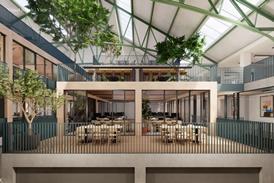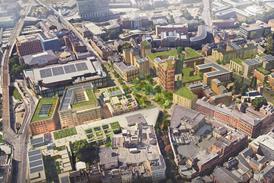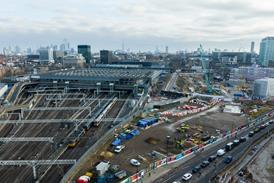The arts and culture hub has received its first gallery, a new lecture theatre and study space as part of its makeover
The Warburg Institute in London has unveiled a £14.5m renovation project designed by Stirling Prize-winning architects Haworth Tompkins.
The Warburg Renaissance scheme includes the Bloomsburg-based institute’s first gallery, as well as a 140-seat auditorium and a centre for special collections.
The Kythera Gallery is set to be a key attraction within the new public-facing cultural hub. Located on the ground floor, it will showcase the institute’s holdings, connecting them to international collections for the first time in its history through a public programme of free exhibitions.
Lying adjacent to the Kythera Gallery, the Hinrich Reemtsma Auditorium fills the site’s previously empty courtyard at the heart of the institute. Lined with wooden panelling, it features a sculptural ellipse in the ceiling, based on Aby Warburg’s original Hamburg design.
The restored Grotrian-Steinweg piano donated by former institute director Ernst Gombrich can also be found in the lecture theatre, which will host public lecture, conferences, concerts and film.
On the lower ground floor, the Wohl Reading Room provides a light-filled space for the study of the Warburg’s special collections, rare books, manuscripts and archives.
The building’s former lecture room has been converted into two new seminar rooms. The Marie-Louise von Motesiczky Teaching Suite is designed with a removable sound-proof dividing wall to create a more intimate space for lectures and other events.
Meanwhile, the Library Collection, housed over four stories, has undergone a shelving reconfiguration to expand stack areas and make space for new acquisitions as well as bring in natural light.
Other enhancements throughout the building incorporate the refurbishment of the reception area, where the newly restored Coade stone frieze of the nine muses of the arts and sciences has been installed.
Elizabeth Flower, project architect, Haworth Tompkins, said: “The Warburg Institute is one of London’s greatest hidden treasures, hiding in plain sight within an anonymous 1950s block.
“Through the Warburg Renaissance project we set out to honour the legacy of both its architect Charles Holden and founder Aby Warburg, while opening its unique contents up to new audiences.
“Striking a balance between modernisation of the Institute’s publicly accessible aspects, alongside the preservation of its extraordinary character and atmosphere has been a forensic and important process. Its architectural re-birth will allow continued discovery and enjoyment of the collections for many future generations.”
The transformation was funded by a £9.5m investment from the University of London, a ‘major gift’ from the Hamburg-based non-profit foundation Hermann Reemtsma Stiftung, along with support from other national and international philanthropists, trusts and foundations.
The Bloomsbury hub, which is one of the world’s leading centres for the study of art and culture, will open a series of new spaces for a public programme of exhibitions and events on 2 October 2024.

































No comments yet